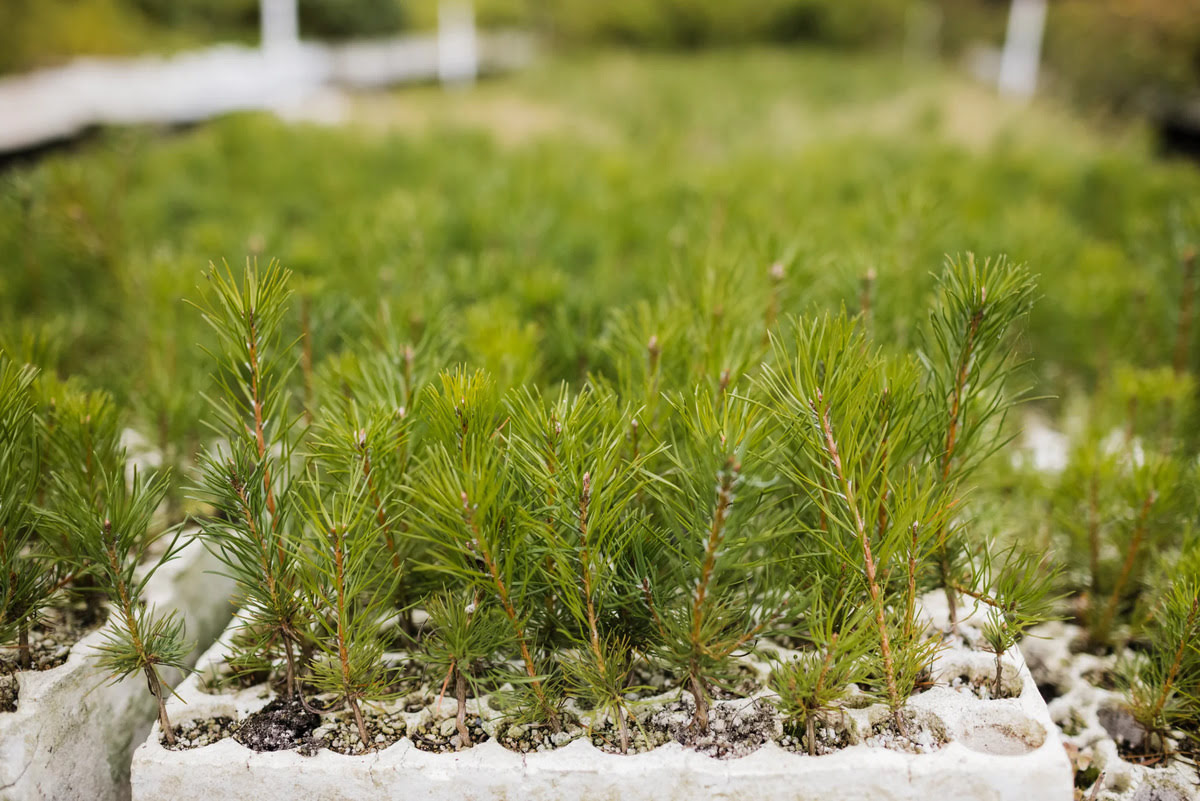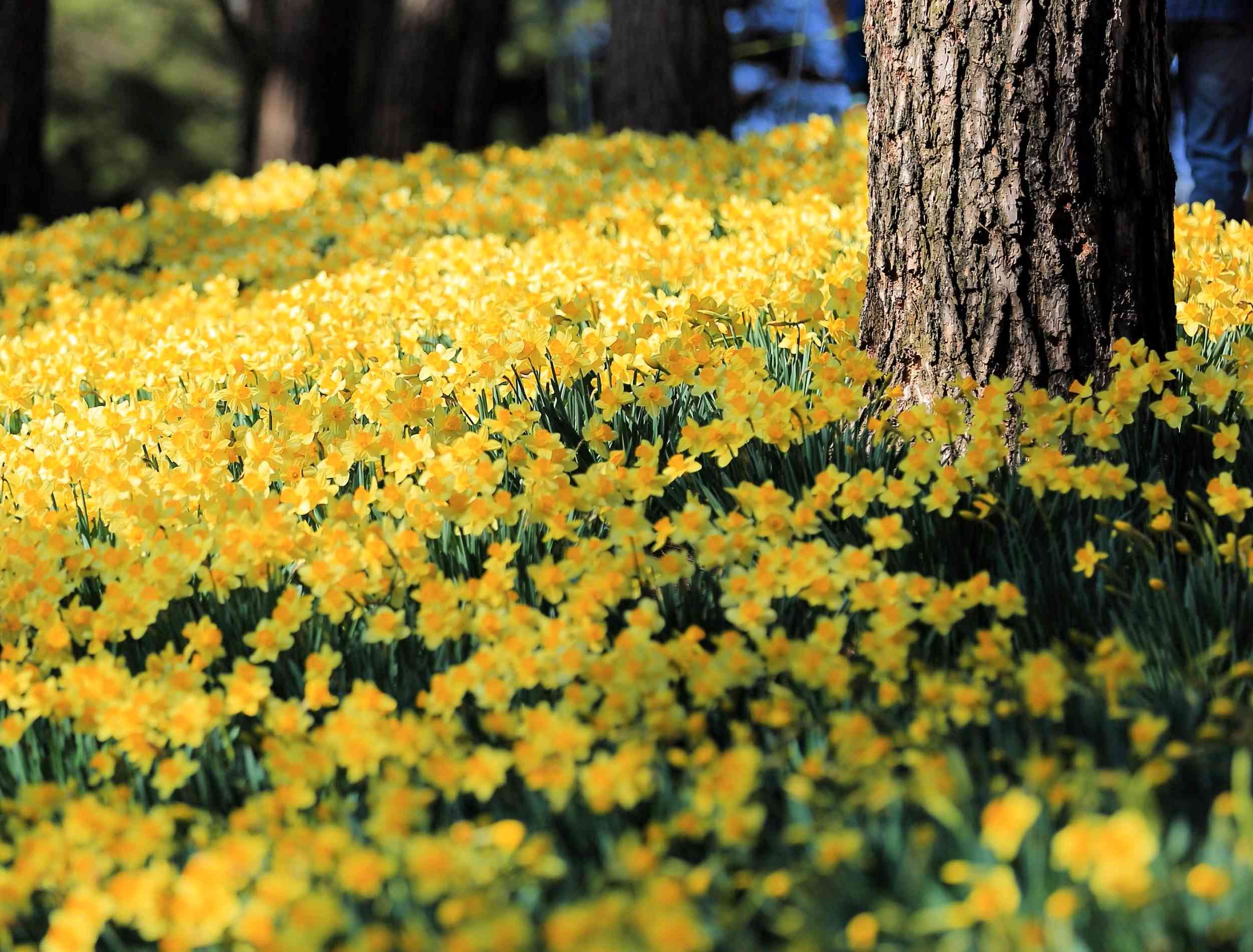Home>Gardening Techniques>DIY Projects>How To Bonsai A Pine Tree


DIY Projects
How To Bonsai A Pine Tree
Modified: January 22, 2024
Learn how to bonsai a pine tree with our step-by-step DIY guide. Create stunning miniature landscapes with our easy-to-follow project. Start your bonsai journey today!
(Many of the links in this article redirect to a specific reviewed product. Your purchase of these products through affiliate links helps to generate commission for Chicagolandgardening.com, at no extra cost. Learn more)
Table of Contents
Introduction
Introduction
Welcome to the serene and captivating world of bonsai, where the art of cultivating miniature trees has been cherished for centuries. Bonsai, originating from the Chinese term "penzai," which translates to "tray planting," is a practice that involves nurturing and shaping trees to mimic the appearance of their full-sized counterparts in nature. This ancient art form not only showcases the natural beauty of trees but also embodies harmony, balance, and patience.
Bonsai enthusiasts are drawn to the meditative and therapeutic aspects of tending to these miniature trees, as it allows them to connect with nature on a profound level. The process of cultivating a bonsai tree requires careful attention to detail, a deep understanding of horticulture, and a willingness to embrace the passage of time as the tree evolves.
In this comprehensive guide, we will delve into the intricate process of bonsai cultivation, focusing specifically on the art of bonsai-ing a pine tree. By exploring the nuances of selecting the right pine tree, preparing it for bonsai, employing pruning and shaping techniques, and understanding the essential steps for repotting and maintenance, you will gain valuable insights into the art of crafting a breathtaking pine bonsai.
Whether you are a seasoned bonsai enthusiast or a novice eager to embark on this enriching journey, this guide will equip you with the knowledge and techniques needed to nurture a stunning pine bonsai. Let's embark on this captivating adventure and unlock the secrets of cultivating a living work of art.
Choosing the Right Pine Tree
When venturing into the world of bonsai, selecting the right pine tree is a crucial first step that lays the foundation for a successful and visually captivating bonsai creation. Pines are revered for their resilience, majestic appearance, and symbolic significance, making them a popular choice for bonsai enthusiasts seeking to harness the timeless beauty of these evergreen trees.
Before embarking on the journey of bonsai-ing a pine tree, it is essential to consider several key factors to ensure that the chosen specimen is well-suited for bonsai cultivation. Here are essential considerations when selecting a pine tree for bonsai:
- Species Selection: The diverse genus of pine trees offers a wide array of species, each possessing unique characteristics that influence their suitability for bonsai cultivation. Species such as the Japanese Black Pine (Pinus thunbergii), Scots Pine (Pinus sylvestris), and Mugo Pine (Pinus mugo) are favored choices due to their adaptability to bonsai techniques and their striking visual appeal.
- Size and Proportion: The ideal pine tree for bonsai should exhibit a harmonious balance between trunk thickness, branch structure, and overall proportions. Look for a young pine tree with a sturdy trunk and well-defined branches, as these attributes provide a solid foundation for shaping and styling the bonsai over time.
- Nebari and Root Structure: A well-developed nebari, or surface roots, is highly desirable in a pine tree intended for bonsai. The presence of radiating surface roots enhances the tree’s aesthetic appeal and stability when potted as a bonsai, contributing to a sense of age and strength in the overall composition.
- Health and Vigor: Prioritize selecting a pine tree that exhibits robust growth, healthy foliage, and minimal signs of stress or disease. A healthy tree is better equipped to withstand the rigors of bonsai cultivation and respond positively to pruning, wiring, and styling techniques.
By carefully evaluating these factors and seeking out a pine tree that aligns with the principles of bonsai aesthetics and horticultural suitability, you can set the stage for an enriching and rewarding bonsai journey. The process of selecting the right pine tree is an art in itself, as it requires a discerning eye and a deep appreciation for the inherent beauty of these remarkable trees.
Preparing the Tree for Bonsai
As you embark on the captivating journey of crafting a pine bonsai, the process of preparing the tree for its transformation into a miniature masterpiece is a pivotal phase that sets the stage for the tree’s future growth and development. This preparatory phase involves a series of thoughtful steps aimed at nurturing the tree’s health, refining its root system, and establishing the groundwork for shaping and styling the bonsai.
Here are essential steps to prepare a pine tree for bonsai cultivation:
- Root Pruning: Prior to repotting the pine tree into a bonsai container, root pruning is conducted to encourage the development of a compact and fibrous root system. Careful pruning of the roots helps to stimulate new root growth, enhances the tree’s overall vigor, and facilitates the tree’s adaptation to the confined space of a bonsai pot.
- Repotting Timing: Timing is crucial when repotting a pine tree in preparation for bonsai cultivation. Spring, before the onset of new growth, is generally considered an optimal time for repotting. This allows the tree to recover from root pruning and adapt to its new container before the growing season commences.
- Soil Composition: Selecting the right soil composition is vital for promoting the health and vitality of the pine bonsai. A well-draining soil mix that balances moisture retention with aeration is essential to prevent waterlogged roots and facilitate healthy growth. Consider using a blend of akadama, pumice, and lava rock to create an optimal environment for the pine bonsai’s root development.
- Initial Styling Considerations: While preparing the pine tree for bonsai, envision the desired future appearance of the bonsai and consider preliminary styling decisions. Assess the tree’s trunk structure, branch positioning, and overall form, laying the groundwork for future pruning, wiring, and shaping techniques to bring your bonsai vision to life.
By meticulously tending to these preparatory steps, you will establish a solid foundation for the pine tree’s transition into a captivating bonsai. This preparatory phase not only nurtures the tree’s health and vitality but also sets the stage for the creative expression and artistry that will unfold as you embark on the journey of shaping and refining your pine bonsai.
Pruning and Shaping Techniques
Pruning and shaping are integral aspects of crafting a visually striking and harmonious pine bonsai. These techniques allow you to sculpt the tree’s form, refine its silhouette, and evoke the essence of age and character within the miniature representation of the majestic pine tree. By employing precise pruning and shaping methods, you can guide the tree’s growth, accentuate its natural beauty, and imbue the bonsai with a sense of grace and balance.
Here are essential pruning and shaping techniques for cultivating a captivating pine bonsai:
- Branch Pruning: Pruning the branches of the pine bonsai is a delicate art that involves selectively removing unwanted growth to enhance the tree’s overall structure and balance. Regular branch pruning encourages the development of fine ramification, or secondary branching, which contributes to the bonsai’s refined appearance and creates a sense of visual depth and intricacy.
- Apical Pruning: The apical, or top, growth of the pine bonsai is carefully pruned to maintain the desired height and silhouette of the tree. By strategically trimming the apical buds, you can control the tree’s vertical growth and encourage the development of lateral branches, fostering a compact and well-proportioned canopy.
- Wiring Techniques: Wiring is a fundamental method for shaping the branches of the pine bonsai, allowing you to sculpt the tree’s silhouette and impart graceful movement and curvature to the branches. When applying wire, exercise care to avoid damaging the tree’s delicate bark, and periodically monitor the wire to prevent it from constricting the branches as they grow.
- Jin and Shari Creation: In the art of pine bonsai, the creation of jin (deadwood branches) and shari (stripped bark areas) can evoke a sense of age, resilience, and natural beauty within the bonsai composition. By carefully crafting jin and shari features, you can infuse the bonsai with a captivating sense of character and evoke the enduring spirit of mature pine trees in nature.
By skillfully applying these pruning and shaping techniques, you will embark on a transformative journey that transcends mere horticulture, allowing you to channel your creativity and artistic vision into the living canvas of the pine bonsai. Each pruning cut and carefully placed wire embodies a profound expression of harmony and balance, culminating in the creation of a timeless work of art that reflects the enduring beauty of nature in miniature form.
Repotting and Maintenance
Repotting and ongoing maintenance are essential facets of nurturing a healthy and thriving pine bonsai, ensuring that the tree continues to flourish and evolve gracefully over time. Repotting, in particular, plays a vital role in refreshing the tree’s growing environment, promoting root health, and sustaining the bonsai’s vigor and vitality.
Here are key considerations for repotting and maintaining a pine bonsai:
- Repotting Frequency: Pine bonsai trees are typically repotted every two to three years to prevent root congestion, refresh the soil, and promote the development of a well-balanced root system. Repotting intervals may vary based on the tree’s growth rate, the soil’s condition, and the overall health of the bonsai.
- Root Pruning and Inspection: During the repotting process, carefully prune the tree’s roots to maintain a compact and healthy root system. Inspect the roots for any signs of disease, rot, or circling roots, and trim them accordingly to encourage the growth of new feeder roots and enhance the tree’s overall vitality.
- Soil Renewal: Repotting presents an opportunity to refresh the bonsai’s growing medium, providing a well-balanced soil mix that promotes optimal drainage, aeration, and nutrient uptake. Consider using a quality bonsai soil mix suited for pine trees to create an environment conducive to healthy root development and sustained growth.
- Seasonal Care: Throughout the year, attentive maintenance practices such as regular watering, fertilization, and pest management are essential for sustaining the health and vigor of the pine bonsai. Adjust watering frequency based on seasonal variations and monitor the tree’s response to environmental changes to ensure its well-being.
By adhering to a consistent regimen of repotting and ongoing maintenance, you will nurture a pine bonsai that thrives in its miniature environment, embodying the enduring beauty and resilience of its full-sized counterparts in nature. The attentive care and thoughtful maintenance practices you invest in your pine bonsai will yield a living masterpiece that evolves with grace and vitality, enriching your surroundings with its timeless allure.
Conclusion
Cultivating a pine bonsai is a profound and rewarding journey that invites you to immerse yourself in the artistry of nature, the passage of time, and the enduring beauty of trees. As you navigate the intricate process of selecting the right pine tree, preparing it for bonsai, employing pruning and shaping techniques, and embracing the essential steps for repotting and maintenance, you embark on a transformative odyssey that intertwines horticulture with art, patience with creativity, and tranquility with purpose.
Through the art of bonsai, you not only craft a living work of art but also cultivate a deep connection with the natural world, fostering an appreciation for the exquisite beauty and resilience of pine trees. Each meticulous pruning cut, thoughtful styling decision, and nurturing gesture embodies a profound expression of harmony and balance, resonating with the timeless wisdom encapsulated in the art of bonsai.
As your pine bonsai evolves and matures, it becomes a testament to your dedication, creativity, and reverence for the captivating art form that is bonsai. The miniature embodiment of a majestic pine tree, your bonsai stands as a living testament to the enduring spirit of nature, inviting contemplation, admiration, and a sense of tranquility in its presence.
May your journey with pine bonsai cultivation continue to unfold, weaving a tapestry of artistry, patience, and natural beauty that enriches your life and surroundings. Embrace the meditative allure of bonsai, and allow the timeless wisdom of these miniature trees to inspire and uplift your spirit, fostering a deep-rooted connection with the art of bonsai and the enduring splendor of nature.



